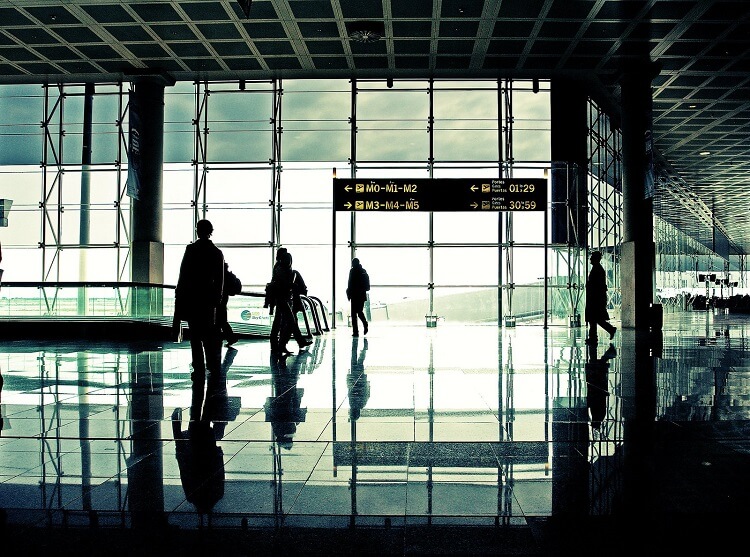All travel to, from and within Europe has been severely restricted, and in some cases non-existent, since the arrival of coronavirus. Now, as July approaches, many of the European and Schengen member states have begun to lift restrictions and allow visitors to arrive by air, sea and land. However, just because various European destinations are now accessible doesn’t mean that everything has now returned to what was normal before Covid-19 struck. With each passing day the situation across Europe is changing and what is valid today may not necessarily apply in a week or a month’s time. It should also be remembered that there remains the possibility of a second wave of coronavirus and, should this occur, then the whole travel picture will alter yet again. Booking a holiday or business trip at this point in time is not only discouraged by the British government but there is also a risk that any plans made now could well be thrown into disarray should the much discussed second wave materialise.
European travel is now far more accessible than was the case just a few short weeks ago. The current situation in the major European Union and Schengen zone tourist and business destinations is as follows:
- Austria – Although Austria is open to most EU countries, visitors from the United Kingdom must undergo a Covid-19 test on arrival or self-isolate for a period of fourteen days.
- Belgium – As with Austria, Belgium has now reopened for UK visitors. Unlike Austria, however, there is no requirement for a medical certificate or self-isolation.
- Cyprus – One of Europe’s most popular holiday destinations for Britons, Cyprus has introduced a category system for visitors. There are no entry requirements for Category A visitors while those from Category B must have a valid medical certificate. The United Kingdom, unfortunately, doesn’t figure in either category and direct flights to the Mediterranean island are not expected to restart until mid-July.
- Czech Republic – Although largely open to other EU member states, the Czech Republic has also introduced a category system for visitors based on the level of perceived risk. There are three groups (green, orange and red) with red signifying the highest coronavirus contamination risk. Sweden and the United Kingdom are the only two European countries in the red group with visitors from these countries required to pass a medical check and enter quarantine upon arrival.
- Denmark – The Danish authorities operate one of the strictest lockdowns in Europe and only tourists from Norway, Iceland and Germany are currently granted admittance. This situation is scheduled to last until early September.
- Finland – Tourists from only six countries are presently allowed to visit Finland and the list does not include the United Kingdom. The Finnish interior ministry has decreed that this will remain the case until July 14th at the earliest.
- France – Since the middle of June, France has been allowing tourists from all EU member states as well as the Schengen countries of Iceland, Norway, Liechtenstein and Switzerland with no requirement for a health certificate or self-isolation. British travellers can travel to France but will need to self-isolate for two weeks which is a result of the British government’s quarantine requirement on French visitors to the UK.
- Germany – Since mid-June, Germany has been open to visitors from any EU member state, as well as four Schengen countries not in the EU, and the United Kingdom.
- Greece – The UK is considered a coronavirus high risk area by the Greek authorities and British arrivals must undergo screening for Covid-19 on arrival with quarantine mandatory if the result is positive. From July 1 restrictions will be loosened with arriving passengers by air or sea only subject to random testing.
- Iceland – British travellers to Iceland must undergo Covid-19 testing upon arrival or enter quarantine for two weeks. Visitors must download a tracking app to their phone and test results will be relayed after a couple of hours. The Covid-19 test is currently free but a charge of €100 (£90) will be applicable from 1st July.
- Ireland – UK citizens can travel to the Republic of Ireland but all arrivals, with the exception of those from Northern Ireland, must self-isolate for fourteen days and also complete a locator form giving details of where the isolation will take place.
- Italy – One of the hardest hit countries in the early days of the coronavirus pandemic, Italy opened its doors to visitors from the other EU member states and the United Kingdom in early June with the proviso that visitors had not been outside the EU/Schengen/UK area within the previous fortnight. Restaurants, bars, cafes and hotels are operating to government guidelines although cruises are suspended for the present.
- Malta – Although Malta will be accessible for most Europeans from July 1st, travellers from the United Kingdom must wait a further (as yet undetermined) period of time before being granted permission to enter.
- The Netherlands – All EU citizens and British nationals can now travel freely to the Netherlands although Swedish and British citizens are strongly urged to self-isolate for a period of fourteen days.
- Norway – The Norwegian borders remain closed to most tourists and visitors until at least the 20th of July with the exception of travellers from Iceland, Finland and Denmark.
- Poland. Polish airports and border crossings are open to tourists and travellers from the EU and the UK since the middle of June with no quarantine requirements.
- Portugal – Although the land border with neighbouring Spain remains closed until the end of June, Portugal is now accepting visitors from all countries in the EU and Schengen zone as well as from the United Kingdom with no quarantine requirements.
- Spain – Severely hit by the coronavirus pandemic, Spain is slowly emerging from troubled times and plans to lift its border restrictions for visitors from the 21st June although this may not include British tourists.
- Sweden – Although Swedish citizens have been badly affected by the Covid-19 outbreak, the government only implemented minimal restrictions and there are no medical or quarantine requirements for visitors from the European Union or the United Kingdom.
- Switzerland. Swiss authorities originally planned to remove entry restrictions in early July but brought the programme forward to the 15th June following encouraging drops in the number of coronavirus cases both in their own country and throughout Europe. There are no quarantine measures in place for visitors although there is a strong enforcement of government hygiene and social distancing regulations.
What applies today may easily change tomorrow as Europe slowly comes to grips with the pandemic. The British government currently demands that all visitors from overseas quarantine themselves for fourteen days with the exceptions being the Republic of Ireland, Isle of Man and Channel Islands. Because of this requirement many European countries are imposing a reciprocal quarantine on British visitors. Should the British authorities relax, or remove, this quarantine requirement it is more than probable that more European countries would respond in kind thus opening up even more opportunities for British tourists to enjoy a European trip sooner rather than later.




